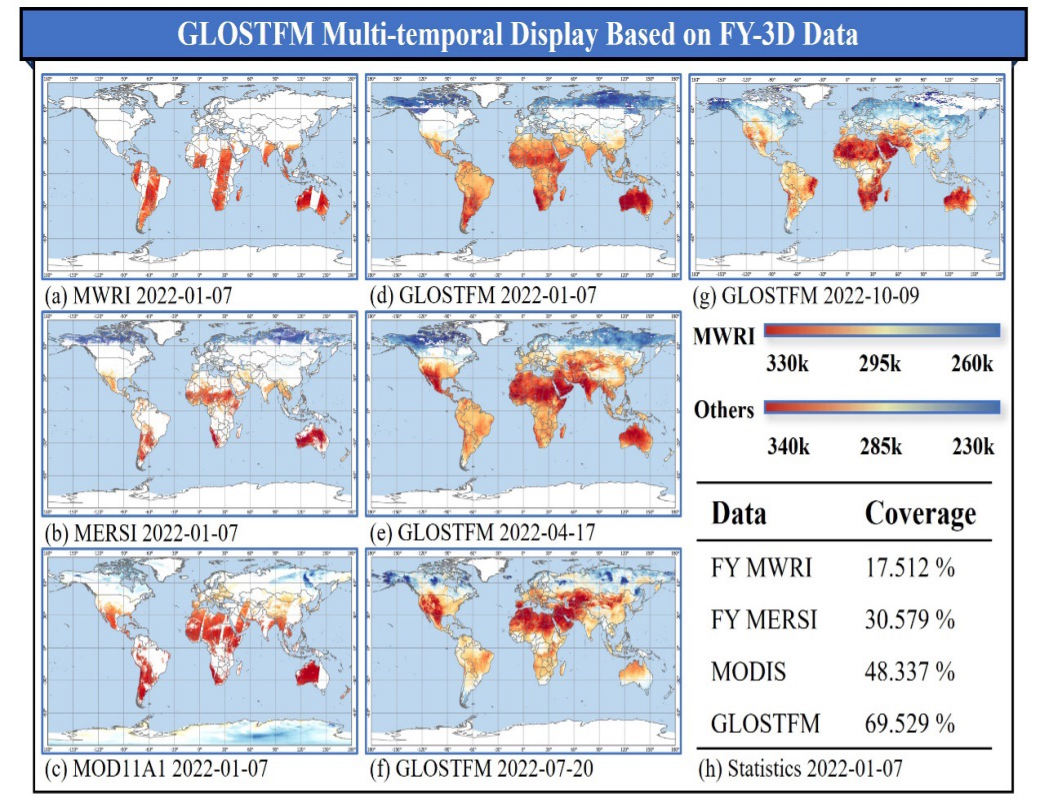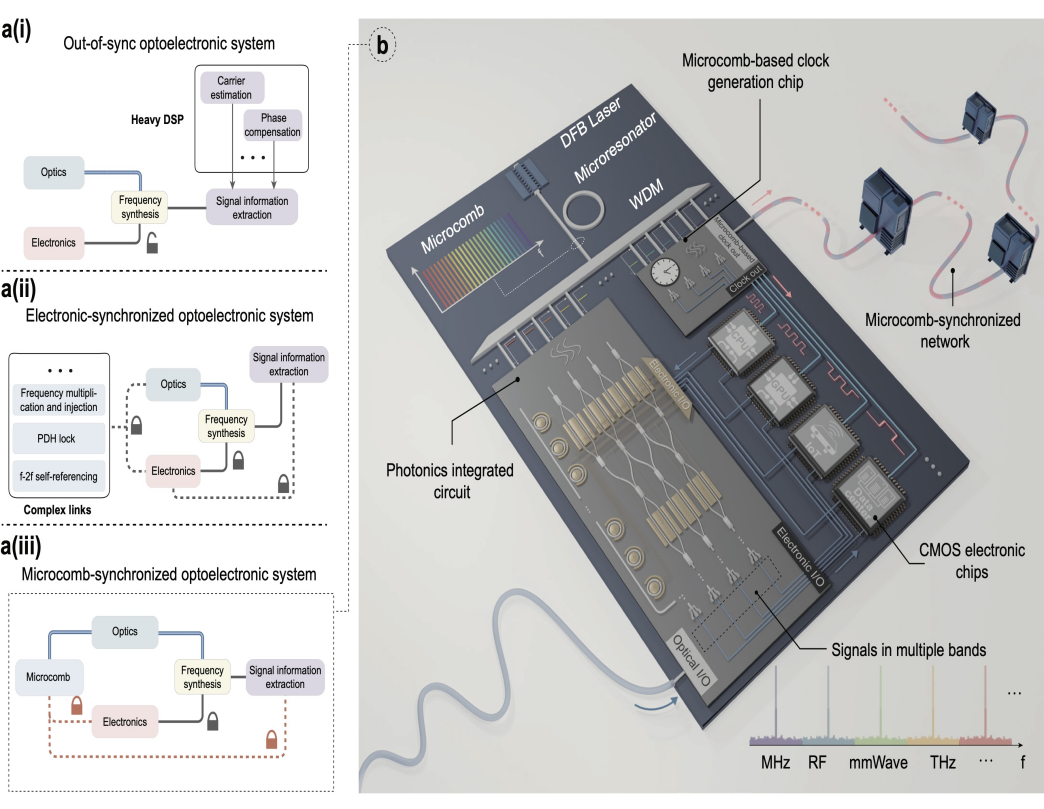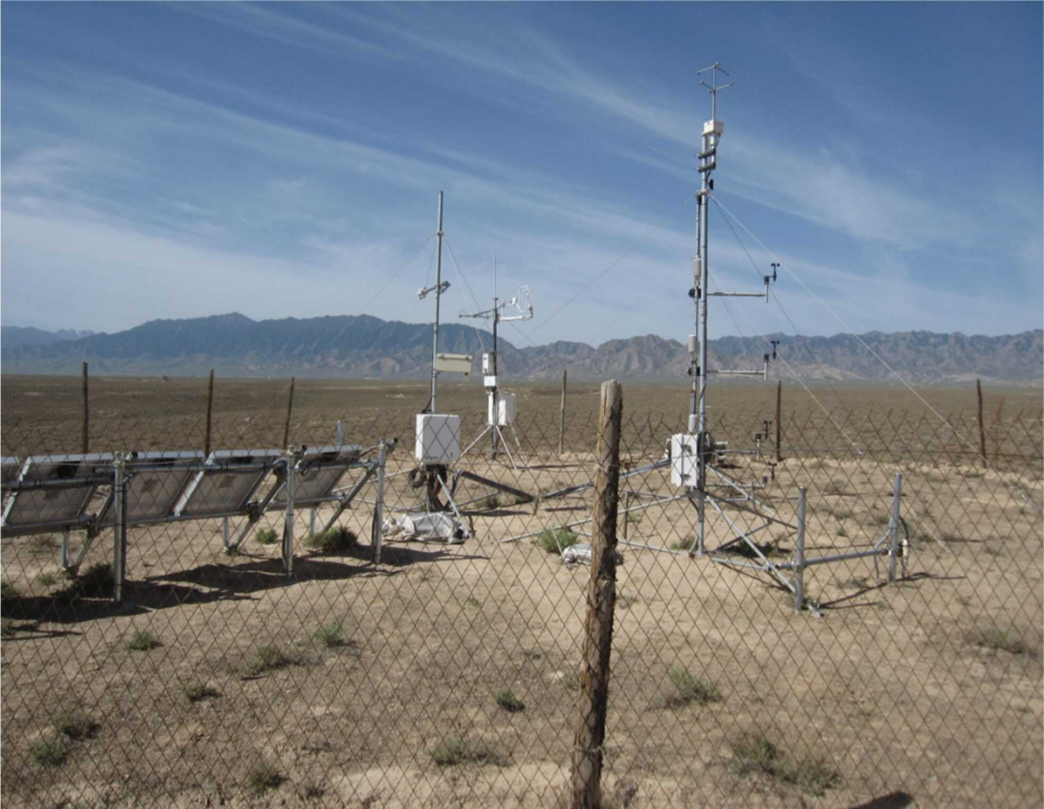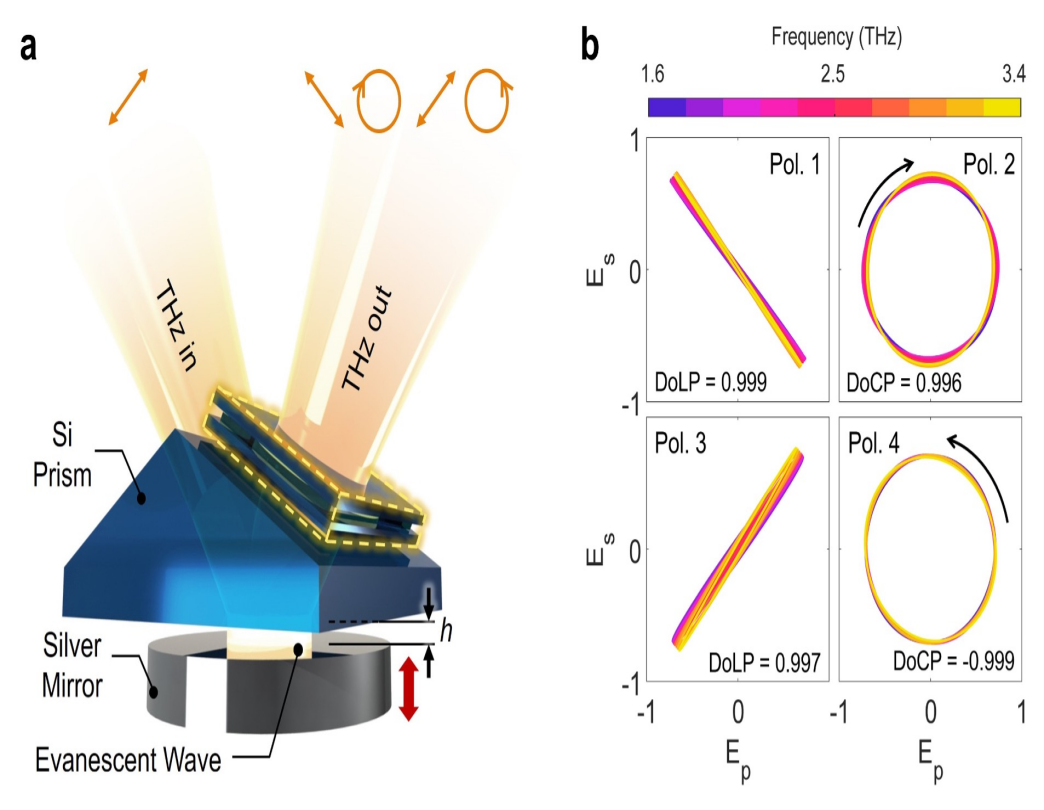-
 Scientists Develop GLOSTFM: A Breakthrough Model for High-Resolution Global Land Surface Temperature Monitoring
Scientists Develop GLOSTFM: A Breakthrough Model for High-Resolution Global Land Surface Temperature MonitoringA research team led by Professor MENG Qingyan from the Aerospace Information Research Institute (AIR) of the Chinese Academy of Sciences (CAS), in collaboration with domestic and international institutions, has successfully developed GLOSTFM, a high-efficiency spatiotemporal fusion model based on multi-source satellite data. By integrating thermal infrared and microwave observations from the Fengyun-3D satellite, GLOSTFM significantly enhances the spatiotemporal resolution of land surface temperature (LST) data, providing a powerful tool for global climate change studies and urban heat island monitoring. The research findings have been published in the Remote Sensing of Environment.
March 21, 2025 -
 Photonic Clock Chip Paves the Way for Next-Generation Ultra-Fast Computing and Communications
Photonic Clock Chip Paves the Way for Next-Generation Ultra-Fast Computing and CommunicationsA research team from Peking University and the Aerospace Information Research Institute (AIR) of the Chinese Academy of Sciences (CAS) has developed a new photonic clock chip that offers a key advancement for future ultra-fast computing for AI development, 6G networks, autonomous vehicles, and remote sensing.
March 12, 2025 -
 Scientists Develop Novel Method to Detect Polluted Water in Rural Areas, Tackling Algal Blooms
Scientists Develop Novel Method to Detect Polluted Water in Rural Areas, Tackling Algal BloomsChinese scientists have developed a novel method to detect and monitor polluted water in rural areas—a critical step toward tackling harmful algal blooms and contaminated ponds. By combining high-resolution satellite imagery with deep learning methods, researchers from the Aerospace Information Research Institute (AIR) under the Chinese Academy of Sciences (CAS) can now pinpoint ponds overrun by duckweed or algae with remarkable accuracy.
February 28, 2025 -
 Research Identifies Limitations of SIF Algorithms in Monitoring Photosynthetic Dynamics
Research Identifies Limitations of SIF Algorithms in Monitoring Photosynthetic DynamicsA study published in the Journal of Remote Sensing by a research team from the Aerospace Information Research Institute (AIR) of the Chinese Academy of Sciences (CAS) evaluates three algorithms—Band Shape Fitting (BSF), Three-band Fraunhofer Line Discrimination (3FLD), and Singular Vector Decomposition (SVD)—designed to measure solar-induced chlorophyll fluorescence (SIF) in plants. These algorithms aim to improve the accuracy of SIF data, which is essential for monitoring photosynthesis in both ecological and agricultural research.
February 28, 2025 -
 Study Reveals Spatial Representativeness of Global Soil Moisture Stations and Its Influencing Factors
Study Reveals Spatial Representativeness of Global Soil Moisture Stations and Its Influencing FactorsA team of researchers from the Aerospace Information Research Institute (AIR), Chinese Academy of Sciences, has developed a new framework to evaluate the spatial representativeness of soil moisture stations and its influencing factors globally. By revealing that around 63% of current soil moisture observation stations reliably reflect soil moisture conditions at the satellite pixel scale, this study addresses key challenges in validating satellite-based soil moisture products. Published in IEEE Transactions on Geoscience and Remote Sensing, the research provides valuable references for the rational deployment of soil moisture sites and the robust validation of satellite products.
February 08, 2025 -
 Terahertz Polarization Control Unlocks New Frontiers in Technology Applications
Terahertz Polarization Control Unlocks New Frontiers in Technology ApplicationsResearchers from the Aerospace Information Research Institute (AIR) of the Chinese Academy of Sciences, in collaboration with Nanjing University, have achieved a groundbreaking milestone in this field. Their innovative method, published in Optica on January 18, introduces unprecedented control over the polarization of THz waves, marking a transformative breakthrough in optics and photonics.
January 22, 2025


